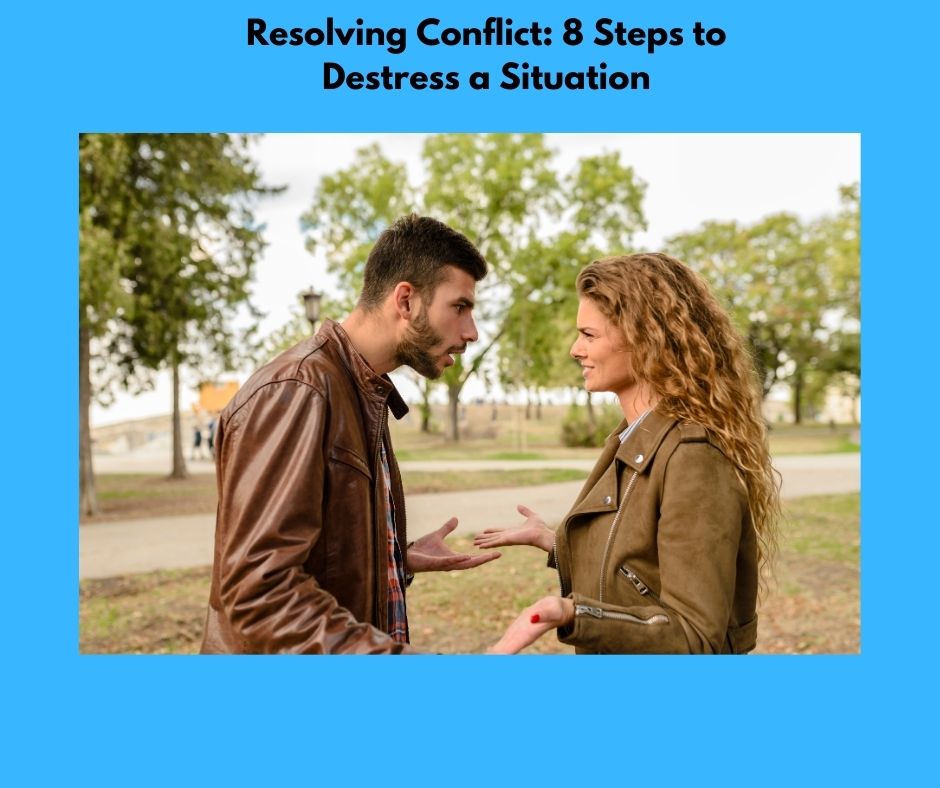Learning how to settle disagreements and arguments is an important lesson for everyone to master. At some point, everyone is faced with conflict in a relationship, whether it be at work, with family or within personal relationships; learning how to solve these problems is a valuable skill to have. Professional and personal relationships can often cause a lot of anxiety and stress. You feel you deserve a raise, but your boss feels you earn enough, or you’d like an extra vacation day, but your boss isn’t being flexible. At home, your husband never picks up after himself, or he feels like you’re too easy on the children. Your friend blew you off to go out with someone else, or your friend borrowed money and never paid you back.
These are just a few examples of how unresolved conflict can not only ruin and impact relationships, but can also cause you to ruminate, overthink and worry to the point of it impacting how you function day to day. Such conflict can cause you to resent people, feel frustrated with yourself and avoid situations. Avoidance is a large contributor to feelings of anxiety. When we avoid a trigger or stressful event, we give it power over us. It’s always better to face things head on and learn how to deal with them. This is how we define ourselves as opposed to letting a situation define us.
Everyone wants to feel heard, valued and validated. If we feel respected and understood, we are more likely to be flexible and open minded. Whether the issue is big or small, we all face challenges that we must learn to overcome. We all need to make it our goal to be solution focused and present minded. By focusing on solutions, we move forward and don’t get stuck in the past.
Here is an 8-step exercise to managing conflict in a healthy way.
- Call a meeting of those involved in the argument/disagreement. Explain the purpose and the ground rules (i.e no interrupting, respectful language, etc…)
- Use reflective listening to understand and clarify each person’s feelings and point of view. For example, “You’re upset because you feel like I’ve already had enough time off” Write down each person’s feelings and concerns and read them out loud. Or use I messages to let a person know how their behavior is impacting you. “When you don’t pick up clothes, I get frustrated because I hate the mess.”
- Allow time for rebuttal.
- Invite everyone to come up with solutions through brainstorming. “You’ll take an extra vacation day this year, but we’ll take it off of your vacation days next year.” “I’ll pick up in the bedroom, if you pick up in the kitchen.”
- Pick a solution. “Which idea do you think is the best one?” Evaluate all of the different options.
- Discuss possible outcomes.
- Obtain a commitment. Depending on the person, sometimes putting the commitment down in writing, or in the form of a contract can be helpful
- Pick a date to follow up and see if the solutions are being implemented and if they are working. “When shall we discuss this again to see if it’s working?”
This type of technique helps encourage mutual respect which is the foundation for healthy relationships. Mutual respect means believing and behaving as if both people are valuable and have important things to contribute. When you know how to approach conflict resolution effectively, it’s easy. What’s most important is for people to prioritize problem solving and make it a part of their approach to life; an approach that will help them to solve not only their own problems, but the problems of those around them.









